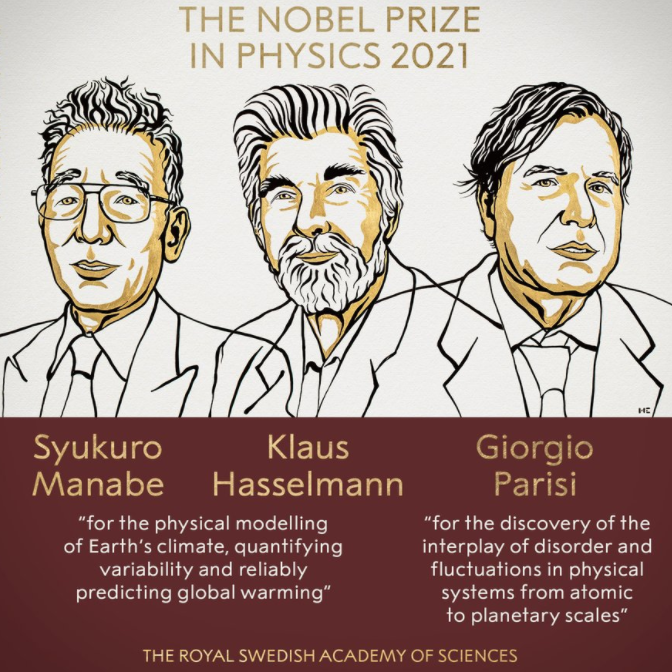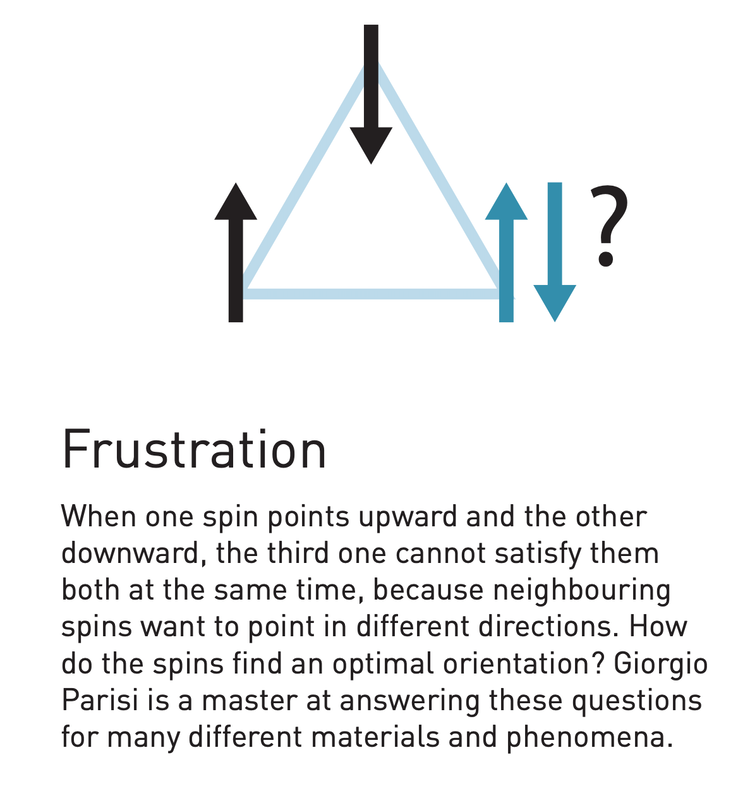Over the last few decades, the global consensus on prioritizing climate action over other development goals has increased tremendously. From high profile COP26 Summit to IPCC 2021 report, it is evident that it is indeed unequivocal that climate change is rapidly intensifying across the globe and becoming a part of our immediate reality. It is intriguing to see almost all global leaders and industry icons unanimously accepting the gravity of the situation, but when it comes to bringing tangible differences by incorporating prudent policymaking and innovative technologies, the path seems unclear.
For saving humanity from this code red crisis, we need to envision real climate action extending beyond its current confined ambit of activism, on-paper discussions, and debates.
This year’s Nobel prize in physics saw a distinct and unique trend. Climate scientists have been conferred this prestigious prize “for groundbreaking contributions to our understanding of complex physical systems”.

The Nobel Prize in Physics 2021 was split in half, with one half going to Syukuro Manabe and Klaus Hasselmann "for the physical modeling of Earth's climate, quantifying variability, and reliably predicting global warming," and the other half going to Giorgio Parisi "for the discovery of the interplay of disorder and fluctuations in physical systems from atomic to planetary scales."
Syukuro Manabe's Research
Syukuro Manabe, a Japanese atmospheric physicist, was one of the promising researchers in Tokyo in the 1950s who left Japan, which had been destroyed by war, to pursue their careers in the United States. Manabes' research, like that of Arrhenius seventy years previously, was aimed at figuring out how rising carbon dioxide levels can lead to rising temperatures. Manabe pioneered the creation of physical models that included vertical air mass transfer due to convection, as well as the latent heat of water vapour, in the 1960s.
Manabe also explored the role of greenhouse gases such as water vapor, carbon dioxide, and ozone in maintaining and changing the thermal structure of the atmosphere. His model anticipated higher temperatures closer to the ground while the upper atmosphere became colder and thus validated that a rise in carbon dioxide caused this heating. If fluctuations in solar energy caused the increase in temperature, the entire atmosphere should have warmed simultaneously.
Klaus Hasselmann's Research
"We've been warning about climate change for approximately 50 years. We should realize that we are entering a situation where there is no turning back.," said Klaus Hasselmann, who won the Nobel Prize for Physical Modeling of Earth's Climate, Quantifying Variability, and Reliable Global Warming Prediction.
In 1976, Hasselmann published this significant paper. He developed a stochastic climate model that demonstrates how weather disruptions can be integrated into broader, more stable air and ocean circulation patterns to generate climate change. In other words, he explained how noisy weather, which can vary quickly and chaotically, can be included in a model to frame longer-term climatic changes. This model led him to wonder how human-caused warming signals, such as those caused by greenhouse gas emissions and their impacts on temperature, might be distinguished from natural climate variability's background noise.
This work set the preliminaries for attribution studies, which propose to explain the links between human actions that contribute to climate change and explicit weather and climate events like tropical cyclones, droughts, severe rainfall events, and the pattern of raising global average temperatures—all of which frequently appear in national and international climate risk assessments that help to guide climate policy.
"Manabe showed how the rise of carbon-dioxide levels and global warming is linked. Hasselmann, with his climate model, showed that it is indeed happening. Their research showed that humans play a significant role in global warming, and it can be controlled by reducing carbon emissions. Thus, it is an excellent step by the Nobel committee to recognize the work of these climate scientists", says Dr. Saswata Bhattacharya, Department of Physics, IIT Delhi.
The two Nobel prizes for this year are different but they are centered around the theme of complex systems. Moreover, this is the first time that complex systems are explicitly mentioned in the Nobel Prize ruling. Therefore for better understanding of Giorgio Parisi's work, we should first know more about complex systems.
What are Complex Systems ?
The question “What is Complexity?” has occupied a great deal of time and paper over the last 20 or so years. There is no precise definition of a complex system, and different experts depending upon their field of interests will give varying answers to what a complex system is. A computer scientist will say that complex problems require a lot of computational resources to solve. A physicist will discuss the interaction between different components and information flow in these systems. On the other hand, a biologist will talk about phenomena like self-organization in biological organisms.
Despite the myriad of different perspectives and “definitions,” we can understand some common properties like a complex system have different individual components that interact with each other, and the system as a whole has no central controlling unit. These systems are unique because they are studied at the level of a system as they cannot be fully understood by studying only the individual components. Moreover, these systems may look random at first with no structures or information flow, but different patterns start emerging as they evolve.
Why do we need to study complex systems ?
The term “complex” might suggest that these are exotic systems that only exist in specific conditions and are uncommon in everyday life. Surprisingly, complex systems are present almost everywhere and are not just limited to the natural sciences. Even systems like the international economy, global social networks, power grid, and transportation are complex in nature.

A flock of birds shown above also represents a complex system. Flocking occurs when individual birds fly together in such a way that they form a discrete entity. The most remarkable feature is that birds do this without any lead bird directing each bird's individual action. Birds only interact with their close neighbors without bumping into each other, and striking patterns emerge from such flocks.
Thus, studying complex systems is very useful as they have applications ranging from neuroscience to biology and machine learning. However, the sheer variety of complex systems makes it very hard to derive any sort of universal rules for them.
Giorgio Parisi's Research
Giorgio Parisi, a theoretical physicist at the Sapienza University of Rome, received the Nobel prize for his contributions to complex systems theory. His work allowed scientists to study systems that, on the surface, look unpredictable and random. Most importantly, his theories can be applied at all scales like glass, the brain, finance, the flight of birds, glaciers, etc.
Between 1979 and 1983, Parisi developed his theory of "disordered systems," which became the benchmark for modeling complex systems. He studied "frustration" in a class of metal alloys with strange magnetic properties, called spin glasses.
Spin glass and Frustrated systems
In complex systems, sometimes different pairs of elements experience conflicting forces such that these systems become "frustrated," and it's hard for physicists to study them. In the spin glass, a similar phenomenon occurs where some atom pairs align in the same direction, and others go in opposite directions. Globally these pairs are not able to find an optimal alignment, and thus, there is frustration.

Professor Parisi used a mathematical model called, Replica trick to solve the problem of frustrated systems. Replica trick is based on handling many different copies of the system at the same time. Basically, he took a disordered system, replicated it multiple times, and compared how different replicas behave. He was able to show that these systems can get stuck in sub-optimal states for a long time without potentially finding the optimal alignment.
Giorgio Parisi's research became a cornerstone of our understanding of spin glasses and many complex systems. He could even predict the emergence of beautiful patterns in the flock of starlings, as mentioned before. Moreover, Replicas have been used in neural networks, with important applications in machine learning. Therefore, his theory revolutionized our understanding of the complex systems that were otherwise thought to be indecipherable.
A word of advice
I'd had not put it in complex systems, but therein general the scope of quantum mechanics and quantum physics. A field with a Nobel prize doesn't mean that the other fields are boring or vice versa - this is never the case. I don't think that you youngsters need to bother much about which field is getting a Nobel. Never really aim your career at thinking that this is what is working now, and I should associate myself with this. Go where your interest lies, something you enjoy working upon," replies Dr. Saswata when asked about the future scope in physics.
The Nobel prize is assuredly the most noticeable, prominent, and coveted award across science. It appears that success is rarely the result of arduous labor, as the stereotype goes for Thomas Edison and the lightbulb, nor is it the result of pure luck. Genius is defined as the capacity to apply techniques to problems so that brilliant outcomes are produced. Write down anything you think of, no matter how insignificant, how late at night, how busy you are. When you see it again, you'll give it a shot. Never lose an idea.




